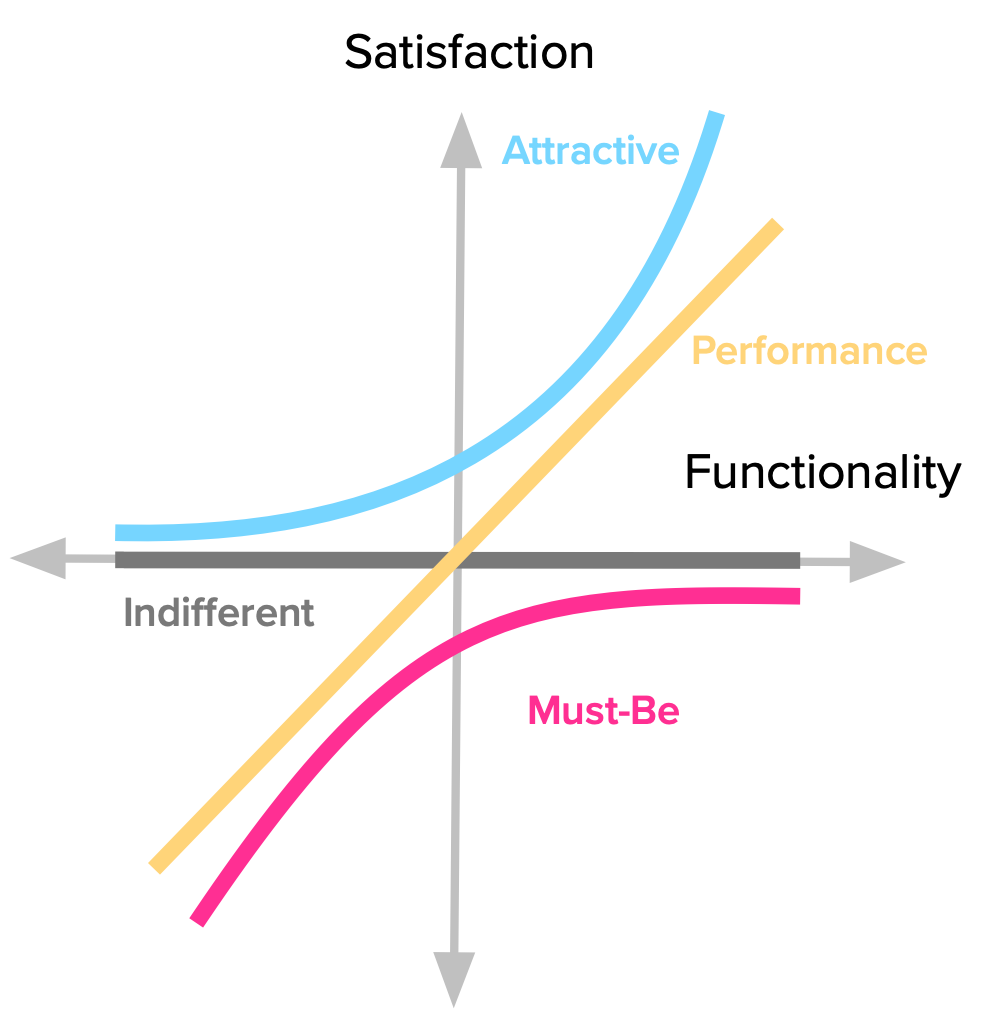
The Kano Model is a widely used framework in product management for understanding customer satisfaction and prioritizing product features. Developed by Japanese researcher Dr. Noriaki Kano in the 1980s, this model offers a systematic approach to identifying which features are essential for a product, which can enhance user satisfaction, and which can truly “wow” customers. By categorizing features, it helps product managers make informed decisions that balance customer needs and resource constraints, while delivering maximum value.
In this blog, we’ll take a deeper dive into the workings of the Kano Model, explaining how it can be applied in product development, its categories, and the benefits it offers to both product teams and customers.
Core Idea of the Kano Model
At the heart of the Kano Model is the idea that not all features are equal when it comes to customer satisfaction. Some features are expected, some have the potential to improve customer satisfaction incrementally, and others are delightful but unexpected. The Kano Model groups these features into three major categories:
- Basic Needs (Must-Have Features): These are the features customers expect from a product. They won’t necessarily improve customer satisfaction, but if these features are missing, it can lead to dissatisfaction. For example, in a hotel room, a clean bed and running water are basic expectations. If a hotel fails to provide these, guests will be very unhappy. In a digital context, consider how critical basic security features are to any online platform—without them, users will feel unsafe and frustrated.
- Performance Features (Linear Features): These are features that directly impact customer satisfaction. The better these features are, the more satisfied customers will be. For example, the faster an app runs, the happier its users are likely to be. Performance features typically exist on a scale, meaning incremental improvements lead to increased satisfaction. In the context of a messaging app, faster message delivery or higher-quality video calls would qualify as performance features.
- Excitement Features (Delighters): These features are often unanticipated by users but, when delivered, they provide an extra level of joy. Excitement features can generate delight and set a product apart from competitors. In the same hotel analogy, finding a complimentary breakfast buffet when you weren’t expecting it can be a delightful surprise. Similarly, a software platform introducing a cutting-edge feature like augmented reality filters in a photo app can create excitement. Importantly, the absence of these features doesn’t lead to dissatisfaction because users don’t expect them in the first place.

Extended Categories in the Kano Model
Beyond these core categories, the Kano Model also defines two other lesser-known categories:
- Indifferent Features: These are features that do not significantly affect customer satisfaction, regardless of whether they are present or absent. For example, in a travel booking app, users may not care whether the app includes the ability to change the font size. Indifferent features consume resources without adding significant value.
- Reverse Features: These are features that some customers love while others dislike. They are polarizing in nature and should be approached with caution, as implementing these features could alienate certain segments of the customer base. For instance, an overly complex interface might appeal to tech-savvy users but frustrate casual users.
The Importance of the Kano Model
One of the key strengths of the Kano Model is its customer-centric approach. It encourages product teams to thoroughly understand what customers need and expect from the product, making it easier to make decisions about which features to prioritize. This is especially helpful when balancing the trade-off between customer satisfaction and limited development resources.
By classifying features, teams can determine which investments will have the biggest impact on the user experience. The Kano Model provides a structured way to:
- Manage customer expectations: Teams can ensure basic needs are met, while also aiming to deliver excitement features to outperform competitors.
- Allocate resources wisely: Focus on improving performance features and adding excitement features, while minimizing the addition of indifferent features that add little value.
- Create long-term strategies: Since customer expectations evolve over time, the Kano Model helps in continuously improving products by reassessing how features are perceived.
Applying the Kano Model in Product Management
The Kano Model can be a valuable tool in different stages of product development, but it’s especially useful during the feature prioritization phase. Here’s how product managers can apply the model:
- Identify Customer Needs: The first step is gathering feedback from customers using surveys, interviews, or focus groups. This helps in identifying what customers expect from the product and what delights them.
- Categorize Features: Once customer needs are identified, map each feature into one of the Kano categories: basic needs, performance features, or excitement features. This allows for a clearer understanding of which features are essential and which can provide competitive differentiation.
- Prioritize Features: Focus development efforts on basic and performance features initially to ensure customer satisfaction. Once these are well-established, teams can work on introducing excitement features to surprise and delight customers.
- Monitor and Iterate: Customer preferences change over time. What once was an excitement feature may become a basic need (e.g., mobile responsiveness in web design). Continuous monitoring through customer feedback helps keep the product relevant and aligned with changing customer expectations.
Real-World Examples of the Kano Model in Action
The Kano Model has been applied by many companies to great effect:
- Apple: Apple has mastered the art of using the Kano Model. Basic needs like reliable hardware and a smooth operating system are always met. Performance features, such as camera quality and processing speed, are consistently improved with every new iPhone release. Excitement features, like Face ID or the dynamic island in recent iPhone models, surprise users and keep them excited for future releases.
- Amazon: Amazon ensures basic needs (quick delivery, easy checkout) are well-handled. Over time, it has enhanced performance features like delivery speed with Prime membership, and it delights customers with excitement features like Alexa and one-click purchasing.
Limitations of the Kano Model
While the Kano Model is a useful framework, it has its limitations. For one, the classification of features is not static. As technology evolves, what was once a “delighter” can quickly become a “must-have.” Take, for example, touchscreens in smartphones; once a feature that delighted customers, it is now a basic expectation.
Additionally, the model does not provide detailed guidance on how to weigh features within each category. For example, among performance features, which ones should be prioritized? Teams will still need to use complementary methods such as cost-benefit analysis or user testing to make these decisions.
Conclusion
The Kano Model is a comprehensive tool that helps product managers focus on customer satisfaction when prioritizing features. By classifying features into basic needs, performance features, and excitement features, the Kano Model ensures that teams focus on meeting customer expectations and going beyond them where possible. This approach not only leads to happier customers but also differentiates a product in competitive markets.
By understanding the dynamics of customer satisfaction through the Kano Model, product teams can make informed decisions that balance customer needs, business objectives, and available resources—ultimately leading to a better product and stronger customer loyalty.
